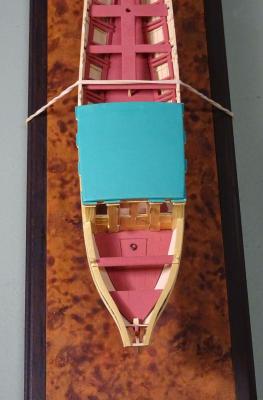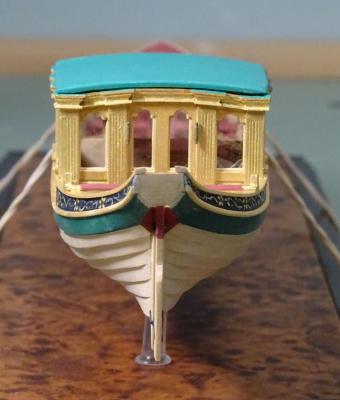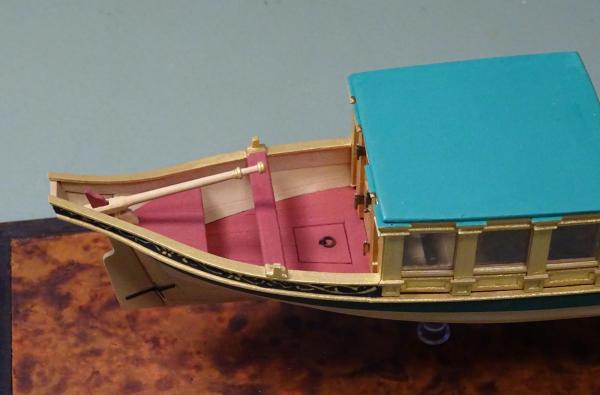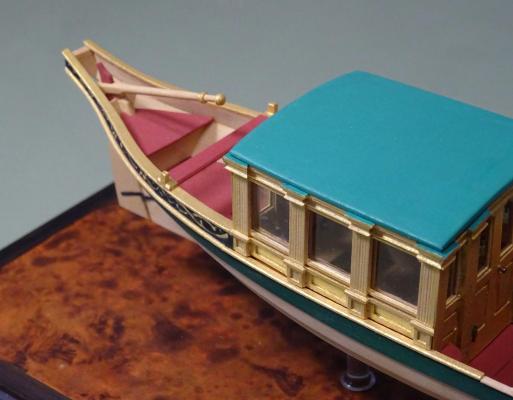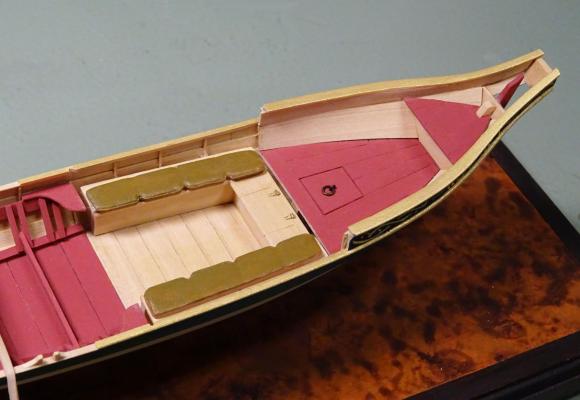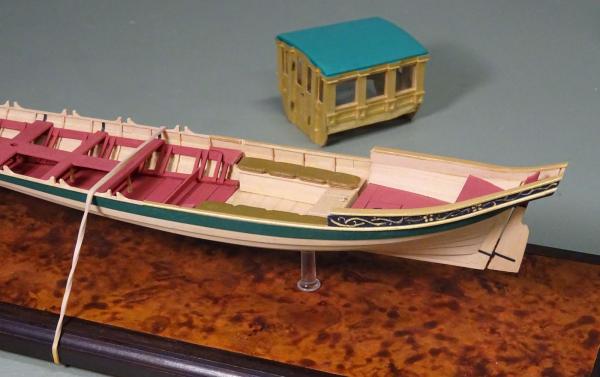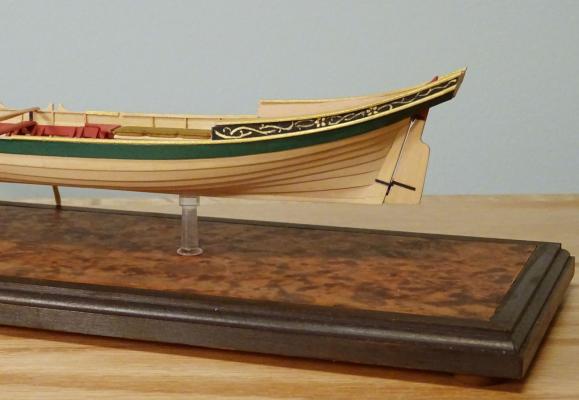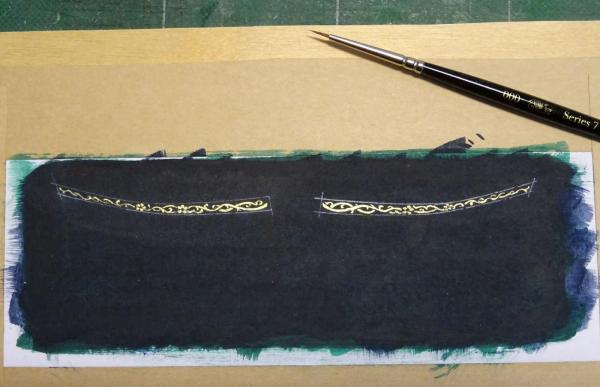-
Posts
13,368 -
Joined
-
Last visited
Content Type
Profiles
Forums
Gallery
Events
Everything posted by druxey
-

A Lorch Micro-Mill that never was ...
druxey replied to wefalck's topic in Modeling tools and Workshop Equipment
Lorch lurches! The monster lives!! I look forward to you progress with this re-build. -
Thanks for the explanation, Gaetan. Bien entendu!
- 728 replies
-
- le fleuron
- 64 gun
-
(and 1 more)
Tagged with:
-
Ed: no special paper was used, just regular bond. As it's sealed on both sides, (paint on one, white glue on the other) deterioration is unlikely. Thanks to everyone for looking in and for all the 'likes'. It's very encouraging! Today I installed the aft thwart and mooring timber heads, as well as the tiller. There was no indication of a tiller on the draught, so this is my own invention. I may paint the hand-hold in crimson. The tiller was carved and sanded to shape by hand, not turned. At this point in the build, it is time to make a list of what remains to be done. There are ornamental carved brackets at each corner of the coach, two ensign staffs and their flags. Also, there are twelve oars to make. Stay tuned!
- 641 replies
-
- greenwich hospital
- barge
-
(and 1 more)
Tagged with:
-
Hmmm. Now, focus, Mike, focus! Good to see you back in action on Aggie.
- 150 replies
-
- agamemnon
- caldercraft
-
(and 1 more)
Tagged with:
-
I guess that you - and we - are pumped! They look great, Chuck.
- 1,051 replies
-
- cheerful
- Syren Ship Model Company
-
(and 1 more)
Tagged with:
-
Lovely work as ever, Gaetan, but shouldn't the mortar be toned down a little? It looks very bright.
- 728 replies
-
- le fleuron
- 64 gun
-
(and 1 more)
Tagged with:
-
Well folks, I could have fudged things and said nothing - you would never have known, but I would. Thanks for the comments and support for this build.
- 641 replies
-
- greenwich hospital
- barge
-
(and 1 more)
Tagged with:
-
Cog: No, I use acrylic paint, so there are no issues. I still stretch the paper as if doing watercolour, though! Alan: Whatever gives you the impression that I make no misteaks? I repainted the decorative work to the correct length, cut the pieces out and glued them to the model. The cut edges are not an issue here, as they are hidden by mouldings top and bottom, and also overlapped at the ends. The friezes installed, I then cut, shaped and painted the planksheer rails above the decorative work and glued these to the model. The coach is still removable at this point, so giving a clear field of operation. Aft of the coach is another thwart with what appear to be mooring posts attached. These are next on the list.
- 641 replies
-
- greenwich hospital
- barge
-
(and 1 more)
Tagged with:
-
One step forward... and two back! I decided to make the decorative barge-boards as friezes; that is to say, on paper. These will be glued on the model. I stretched the paper on a board and painted the dark background. Once dry, the design was traced down using white transfer paper. The design was then applied using a 000 sable brush and gold acrylic paint. I tried to build the paint up three-dimensionally, as the deign was too fine to carve. When complete, I cut the pieces out carefully, only to find that I'd taken the pattern off to the wrong mark and the pieces were 3/16" too long. So... time for Take Two. I have to do these over again. Onward and upward!
- 641 replies
-
- greenwich hospital
- barge
-
(and 1 more)
Tagged with:
-

Frégate d'18 par Sané , la Cornélie
druxey replied to JohnE's topic in CAD and 3D Modelling/Drafting Plans with Software
Do have fun with the bears - I mean trig and logs! -
I do hope that you are taking all precautions when using acetone. It's nasty stuff. Your frames look beautifully done.
- 649 replies
-
- dunbrody
- famine ship
-
(and 2 more)
Tagged with:
-
Ouch! Hope you are healing OK. Nice progress, Bill. Interesting to see the main stay collar running through the bulkhead above the door in the Van de Velde drawing (post #247).
- 382 replies
-
- sovereign of the seas
- carving
-
(and 1 more)
Tagged with:
-
Nice bit of filing, Chuck. Looks like it was turned!
- 1,051 replies
-
- cheerful
- Syren Ship Model Company
-
(and 1 more)
Tagged with:
-
Yes, Dashicat: the colors are bluish for iron and yellow for bronze or 'mixt metal'. Jud: glad you are here to tell the tale. A sad event.
-
Lots of work, Maury. However, now I see it, I'd get rid of those short little top timbers entirely. It's a) unlikely the vessel was built that way and it will save you a ton of work!
- 525 replies
-
- anchor hoy
- hoy
-
(and 1 more)
Tagged with:
-
Your first attempt at carving will probably go in the scrap box, as will your second or third. But don't be discouraged; your skills will rapidly improve with experience. I've found that making a maquette of modelling clay first helps sort out problems in 3D much better than 2D sketches. If really desperate and you've the budget for it, commission a carving!
-
There are also doors forward, Dan. You'll see them from another angle. The VIP's came aboard via the aftermost thwart and stepped down. I assume that the aft pair of doors were for a servant to hand things through. They are quite narrow: 20" at most.
- 641 replies
-
- greenwich hospital
- barge
-
(and 1 more)
Tagged with:
-
I believe that 'braces' here refer to the gudgeon straps. Steel, Naval Architecture, page 11: BRACES. Straps of iron, copper, or mixt metal, secured with bolts and screws to the stern post and bottom planks. In their after ends are holes to receive the pintles by which the rudder is hung.
-
Thank you, everyone. Still a way to go, though. There's those twelve sweeps (oars) to make as well.... Gerhard: the elegance you see is that of the barge's designer, not mine. Jack: if you Google 'Prince Frederick's barge', you'll see that faux copper roofing color.
- 641 replies
-
- greenwich hospital
- barge
-
(and 1 more)
Tagged with:
About us
Modelshipworld - Advancing Ship Modeling through Research
SSL Secured
Your security is important for us so this Website is SSL-Secured
NRG Mailing Address
Nautical Research Guild
237 South Lincoln Street
Westmont IL, 60559-1917
Model Ship World ® and the MSW logo are Registered Trademarks, and belong to the Nautical Research Guild (United States Patent and Trademark Office: No. 6,929,264 & No. 6,929,274, registered Dec. 20, 2022)
Helpful Links
About the NRG
If you enjoy building ship models that are historically accurate as well as beautiful, then The Nautical Research Guild (NRG) is just right for you.
The Guild is a non-profit educational organization whose mission is to “Advance Ship Modeling Through Research”. We provide support to our members in their efforts to raise the quality of their model ships.
The Nautical Research Guild has published our world-renowned quarterly magazine, The Nautical Research Journal, since 1955. The pages of the Journal are full of articles by accomplished ship modelers who show you how they create those exquisite details on their models, and by maritime historians who show you the correct details to build. The Journal is available in both print and digital editions. Go to the NRG web site (www.thenrg.org) to download a complimentary digital copy of the Journal. The NRG also publishes plan sets, books and compilations of back issues of the Journal and the former Ships in Scale and Model Ship Builder magazines.



